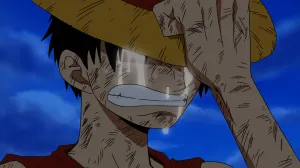Time is of the essence in The One Hand #1, the opening salvo in a story that spans two new neo-noir series at Image Comics. The One Hand from writer Ram V, artist Laurence Campbell, colorist Lee Loughridge, letterer Aditya Bidikar, and designer Tom Muller follows Ari Nassar, a detective living and working in the cyberpunk city of Neo Novena. Nassar is about to embark on his retirement in the year 2873 when a murder lands in his department, suggesting he may have some unfinished business with a serial murderer called the One Hand Killer. Against his superior’s wishes, Nassar puts himself on the case, and the reader is invited along for the ride.
Videos by ComicBook.com
The atmosphere in The One Hand #1 is thick. The closest we get to natural light throughout the entire issue is the yellow-orange coming through the window blinds in the office of the police department psychologist conducting Nassar’s exit interview. At that moment, Ari stands on the precipice of leaving the underworld behind, but it’s still outside the window, obscured from view. Instead, he returns to the shadowy night streets, where constant rain ensures the only light is artificial.
By drenching the setting thoroughly in shadow, Campbell and Loughridge avoid the bright neon façade that has become an overly familiar trapping of similar genre settings through repeated evocations seen in Blade Runner 2049, Cyberpunk 2077, and Clear, As depicted in The One Hand #1, the “Neo” in Neo Novena feels entirely ironic. Neo Novena is aging, tired, and long past being new, much like the story’s would-be retiree protagonist.
The One Hand‘s title is, at first blush, a straightforward reference to the spree killer that Nassar twice believed he’d captured until doubts later emerged when the killings began again. In a way, it feels a bit like we’re coming into this story at the third act of a trilogy, with Ari’s ersatz partner alluded to Nassar’s previous pursuit of the One Hand Killer, which involved shoot-outs, car chases, and explosions.
Throughout the issue, a connection is made between hands and time. On the first page, tight panels focus on the hands of a clock. Later panels focus on objects with metronomic natures — Newton’s cradle, a drinking bird. The same framing is used when Ari looks down at his own hands, recalling how blistered they were after, as a child, he managed to crack a locked briefcase open by trying every possible permutation of the combination lock. He notes that he used to train boxers – a sport that relies on the use of hands – a lifetime ago. That tight shot is used again when Nassar sees the familiar handprint left behind by the One Hand killer. By the time Nassar leaves his retirement watch behind on his desk, the reader can feel that brighter day he could glimpse during the exit interview slipping away.
Another theme that emerges halfway through the issue is questioning truth and reality. The staging used in the exit interview scene, where another world could be glimpsed outside of the window, is employed again during a scene where Ari visits a bordello staffed by what appear to be artificial sex workers. Their exact nature is unclear (Androids? Cyborgs?), but Nemone, the one Ari spends time with, seems to have only ever glimpsed the world outside the brothel through the building’s large windows and the media piped inside its walls. She can’t believe the world outside is as bad as the television makes it seem and voices something like a conspiracy theory before a flash of lightning strikes outside, and she and the rest of the establishment’s workers start to glitch out. The issue reemphasizes the idea of unreality with a doomsaying street preacher proclaiming the opposite view of what Nemone felt, that all lives are dreams and illusions and that truth would only make humans wish for death.
That hazy relationship to reality is emphasized by the storytelling as well. There are several pages in which dialogue and image are not immediately connected. Sometimes, it’s someone off-panel talking over images. Others, it’s text panels alternating with close-ups of individual features — face and hands — without context, presenting them like fragmented memories. The latter technique is used during Ari’s time with Nemone, but also while the One Hand Killer (presumably) does their work and, at the same time, someone digs through a trash bin of discarded sex worker parts, drawing an unsavory line between the sexual and the sadistic.
The One Hand #1 proves a dark and deeply satisfying introduction to Neo Novena, a setting shared with The One Hand‘s upcoming sister series, The Six Fingers, in a Rashomon-style retelling of the same story from multiple perspectives and with different creative teams. I do find myself wishing I had The Six Fingers #1 in hand to fully understand the interplay between the two. However, even apart from that conceit, The One Hand offers a compelling and thematically rich mystery that will quickly sink its hooks into readers.
Published by Image Comics
On February 7, 2024
Written by Ram V
Art by Laurence Campbell
Colors by Lee Loughridge
Letters by Aditya Bidikar
Cover by Laurence Campbell, Lee Loughridge, and Tom Muller








